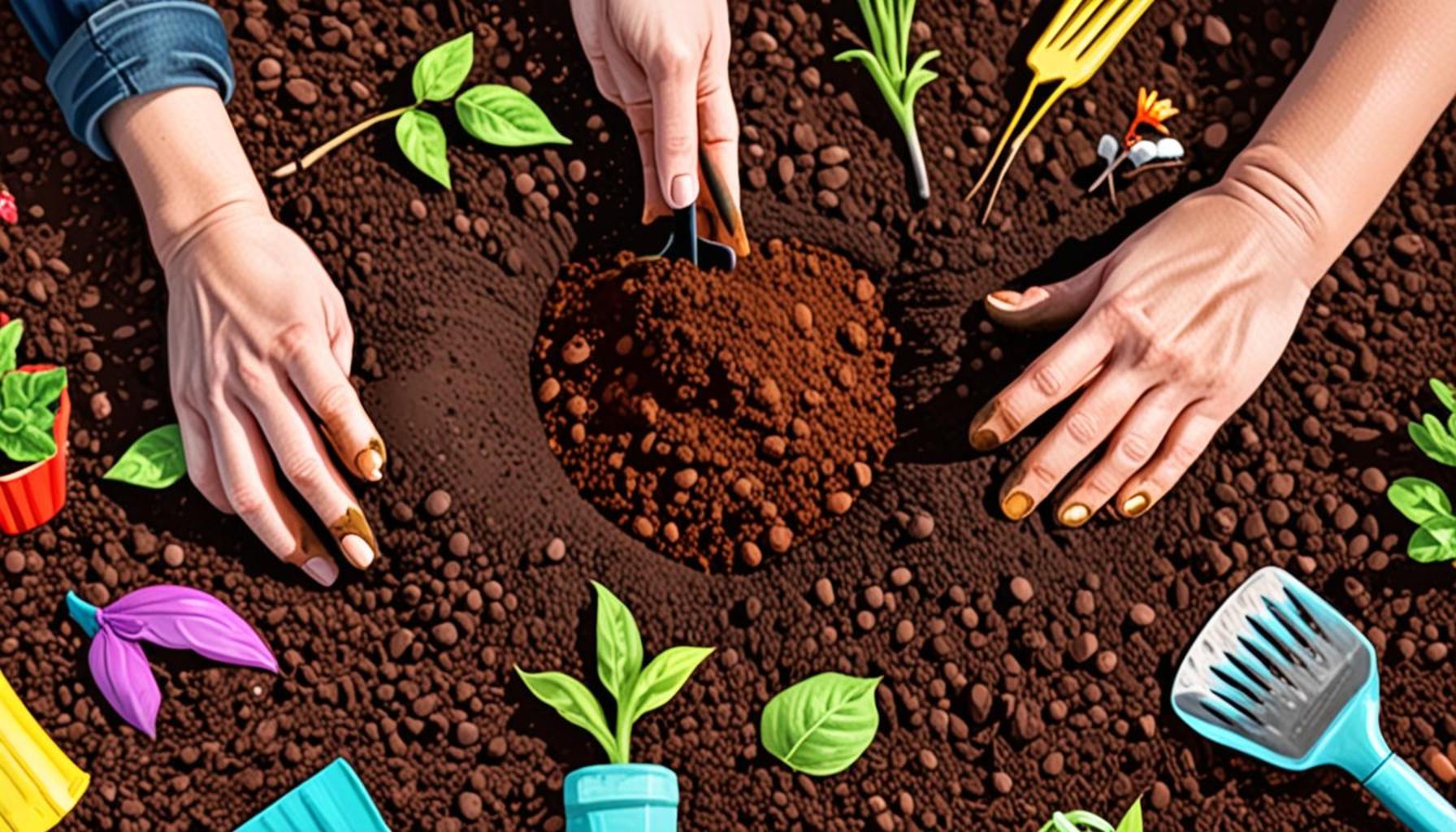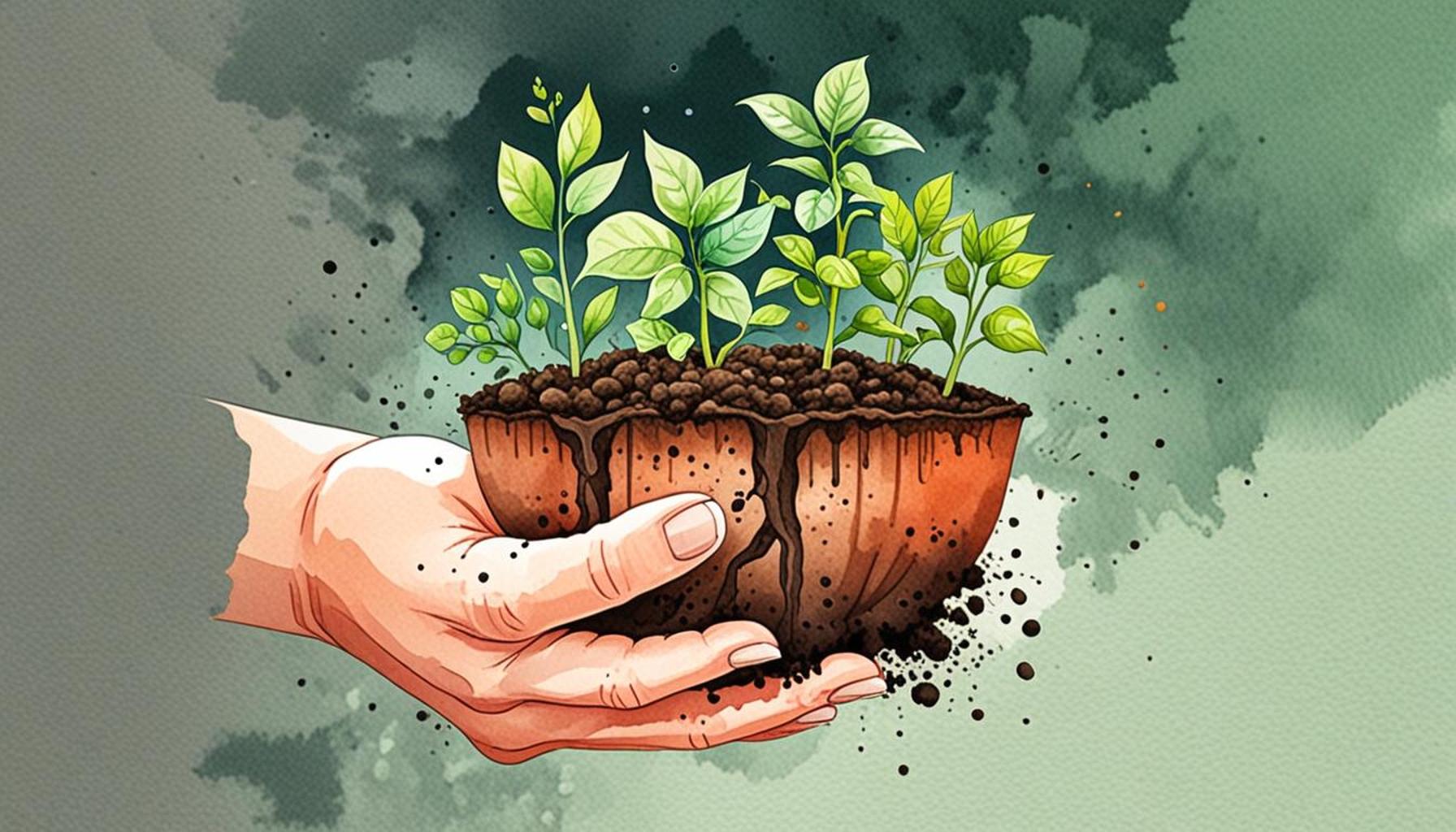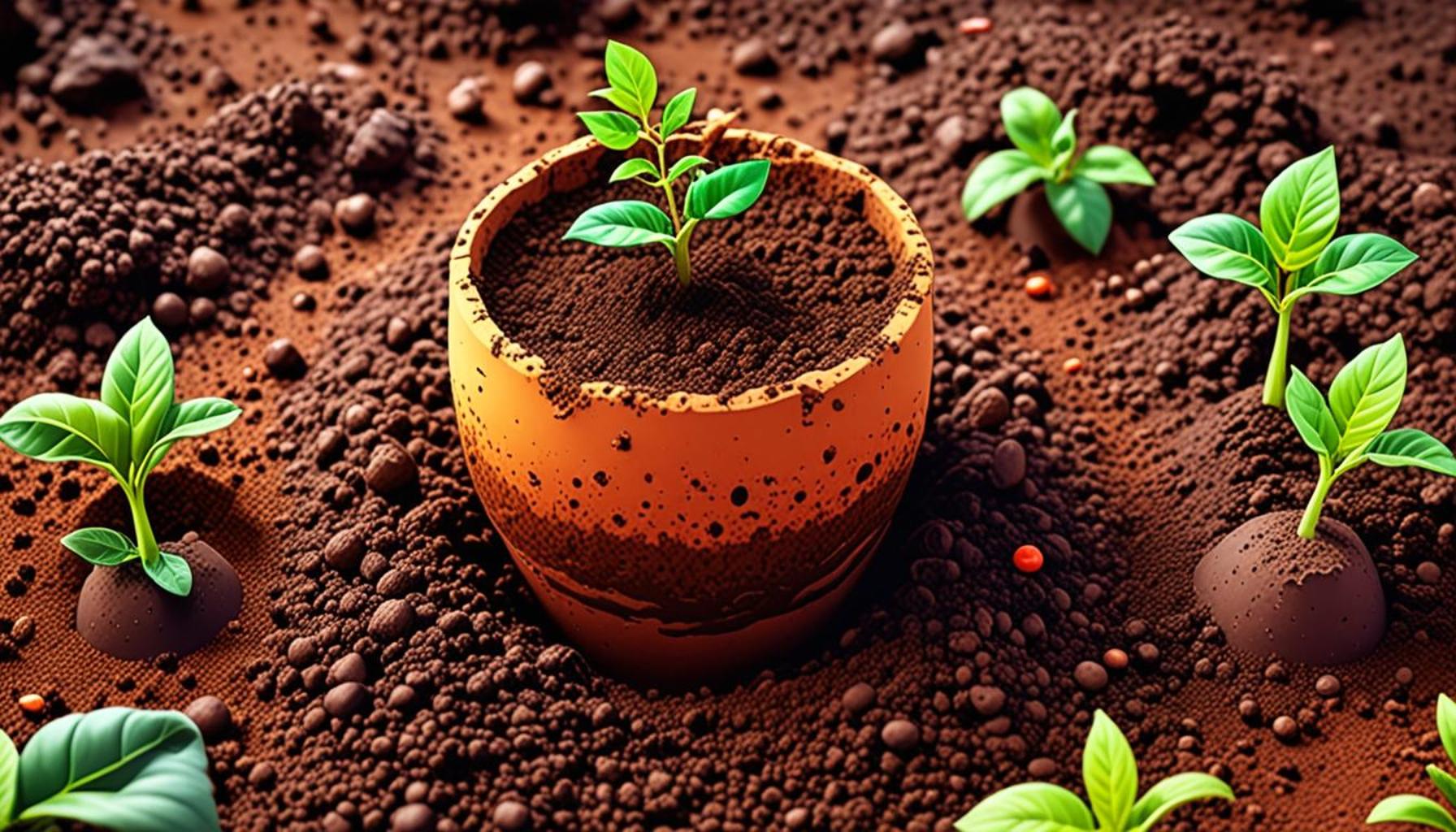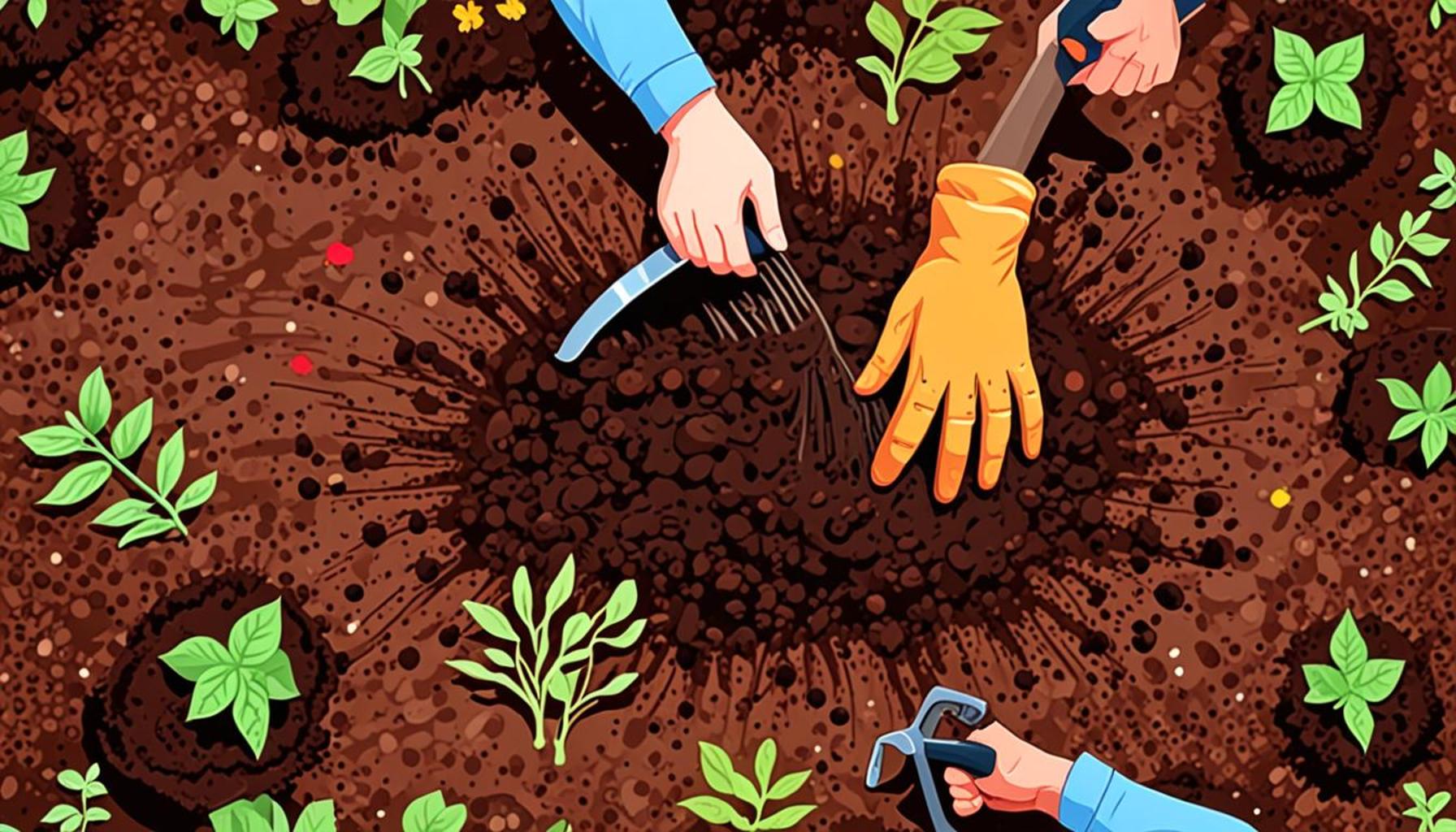The Importance of Soil Preparation for Gardening Beginners

The Art and Science Behind Soil Preparation
Gardening is an art that starts from the ground up. For beginners, soil preparation is a crucial step often overlooked but absolutely essential for planting success. Whether you’re growing vegetables, herbs, or flowers, the condition of your soil can make all the difference. Without proper soil preparation, even the most dedicated gardener may struggle to cultivate vibrant plants.
Understanding the Components of Soil
When diving into soil preparation, it’s pivotal to understand various factors that contribute to soil quality. Here’s what every gardening novice should take into account:
- Soil Quality: Healthy soil supports healthy plants. It must be rich in organic matter, essential nutrients like nitrogen, phosphorus, and potassium, and beneficial microorganisms. Composting is a fantastic way to enrich the soil. For example, mixing kitchen scraps and yard waste into your soil can significantly enhance its nutrient profile.
- Drainage: Proper drainage prevents waterlogging and root rot, ensuring your plants thrive. Sandy or loamy soils typically have better drainage than clay-heavy soils. Incorporating materials like perlite or coarse sand can improve drainage if you’re dealing with heavy soil types.
- pH Levels: The acidity or alkalinity of the soil can affect nutrient availability. Most vegetables, for instance, prefer a slightly acidic to neutral pH (around 6.0 to 7.0). Using a soil test kit can help you determine your soil’s pH; this knowledge allows you to amend it appropriately with lime to raise pH, or sulfur to lower it.
Benefits of Soil Preparation
Engaging in thorough soil preparation can lead to numerous beneficial outcomes. For instance:
- It allows you to identify and amend deficiencies, creating a balanced nutrient environment tailored to plant needs.
- Well-prepared soil creates a suitable environment for beneficial organisms such as earthworms and bacteria, which are crucial for nutrient cycling and soil health.
- It enhances moisture retention and aeration, which are essential for healthy root development. Mulching can help retain moisture, while aerating allows roots to access air more easily.
Taking the time to prepare your soil will pay off significantly. This foundational step sets the stage for robust root systems and thriving plants, making it an investment in your gardening adventure. As you delve deeper into soil preparation, you’ll uncover a wealth of techniques and knowledge that elevate your gardening game to new heights. Engaging with local extension services or gardening clubs can also provide valuable resources and community support. With the right foundation, your garden can bloom into a flourishing ecosystem, rewarding your hard work with bountiful yields and stunning displays. Whether you’re dreaming of a lush vegetable garden or a vibrant flower bed, great gardening starts with great soil preparation.
DISCOVER MORE: Click here for the beginner’s guide to functional gardening
Essential Steps in Soil Preparation
Soil preparation is not just a preliminary task; it is a meticulous process that lays the groundwork for your gardening success. For gardening beginners, understanding how to prepare soil can be an eye-opening experience. The process is multi-faceted, requiring attention to detail and an eagerness to learn. Here are essential steps you can follow to ensure that your soil is primed for planting:
Testing Your Soil
Before you dive into amending your soil, take the crucial step of testing soil quality. Soil tests provide valuable information about nutrient levels, pH balance, and overall health. You can easily acquire a soil test kit from your local garden center or online, or for a more thorough analysis, consider sending a sample to a professional lab. The results will give you insights to:
- Understand your soil’s nutrient content: Knowing what your soil lacks allows you to effectively amend it, thus optimizing plant growth.
- Adjust the pH level: Since each plant has specific pH preferences, understanding where your soil stands can help you correct it more accurately.
- Identify any potential contaminants: Particularly in urban areas, soil can sometimes be contaminated. Awareness of any harmful substances helps you take precautionary steps.
Incorporating Organic Matter
Once you have a clear understanding of your soil’s composition, it’s time to boost its quality by incorporating organic matter. This can come from various sources:
- Compost: Homemade or store-bought compost enriches the soil with nutrients and improves its structure.
- Manure: Well-rotted animal manure, whether from cows, horses, or chickens, adds essential nutrients to the soil, promoting growth.
- Leaf Mold: Decomposed leaves make a great addition as they enhance soil aeration and moisture retention.
Mixing organic matter into your soil leads to improved texture, enhanced moisture retention, and increased microbial activity. This is particularly important for beginners who are learning to establish a healthy ecosystem for their plants.
Breaking Up Compacted Soil
Compacted soil can be detrimental to root growth, water infiltration, and nutrient absorption. For beginners, breaking up compacted soil can be a game-changer. Here’s how:
- Using a Garden Fork: This simple tool can help aerate the soil by creating small holes, allowing for better air and water penetration.
- Tilling: In larger plots, tilling with a shovel or mechanized tiller helps to break up tough soil layers, making it easier for roots to expand.
- Adding Coarse Materials: Incorporating sand or perlite can improve soil texture, which is especially vital in clay-heavy soils.
The overall goal is to create an environment that facilitates root growth and access to nutrients. With these foundational soil preparation steps, gardening beginners can set themselves up for success, paving the way for lush gardens filled with healthy plants.
The Importance of Soil Preparation for Gardening Beginners
Soil preparation is an essential step in gardening that often gets overlooked, especially by beginners. Understanding the foundation of your garden’s ecosystem can dramatically improve plant health, yield, and maintenance efforts. Whether you’re cultivating vegetables, flowers, or herbs, the right soil can make all the difference in your gardening success.One key aspect of soil preparation is testing the soil’s pH level. This process determines whether your soil is acidic, neutral, or alkaline, and it dictates which plants will thrive in your garden. A simple soil testing kit can provide insights into nutrient deficiencies, allowing you to enhance your soil with the necessary amendments like lime or sulfur. Additionally, knowing your soil’s composition can help you choose the right plants as well, ensuring compatibility with the microbial and mineral content of your garden.Another vital step is amending the soil. Incorporating organic matter like compost or well-rotted manure enriches the soil structure with nutrients and improves drainage and aeration. Healthy, loamy soil encourages robust root systems, providing your plants with the best environment for growth. Furthermore, this keeps the soil loose and friable, preventing compaction that can hinder the movement of air and water.Lastly, implementing a layered approach to soil preparation — including tilling, layering organic material, and mulching — can create a thriving microenvironment that fosters growth. By investing time in the preparation of your soil, you set up your garden for long-term success, making it easier to maintain and more productive throughout the growing season.To further illustrate the advantages of proper soil preparation, consider the table below:
| Category | Benefits |
|---|---|
| Soil Testing | Identifies nutrient levels and pH balance for optimal plant growth. |
| Amending Soil | Enhances fertility, improves drainage, and creates aerated conditions for roots. |
| Layered Approach | Creates a healthy microenvironment, improves water retention, and prevents compaction. |
By taking the time to properly prepare your soil, gardening beginners can tap into the full potential of their plants, leading to healthier gardens and more fruitful harvests. Explore each aspect of soil preparation further and see how these practices can transform your gardening experience!
DISCOVER MORE: Click here for essential pest control tips
Techniques for Enhancing Soil Fertility
As you continue your journey into the art of gardening, it’s essential to focus on enhancing soil fertility. Fertile soil is the lifeblood of any successful garden, providing the necessary nutrients plants need to thrive. For gardening beginners, there are several techniques that can elevate soil fertility, ensuring your plants have the best possible start.
Crop Rotation
Introducing the practice of crop rotation can significantly enhance soil fertility. This technique involves growing different crops in the same area across seasons. By alternating plant families, you can prevent nutrient depletion, control pests, and reduce the risk of diseases. For example, following nitrogen-fixing legumes like peas or beans with leafy greens, which require high nitrogen levels, can rejuvenate your soil. This proactive approach ensures that your soil remains rich and balanced, making it an excellent choice for beginner gardeners.
Cover Cropping
Using cover crops is another powerful method to improve soil health. These are non-harvested crops planted primarily to protect and enrich the soil. Popular cover crops such as clover and rye offer several advantages:
- Prevent Soil Erosion: Cover crops protect the soil surface, reducing erosion during rainstorms or heavy winds.
- Suppress Weeds: By occupying space, cover crops can outcompete weeds, reducing the need for herbicides.
- Increase Soil Organic Matter: When cover crops are tilled back into the soil, they add organic material, enhancing soil structure and fertility.
Seasonal planting of cover crops during the off-months ensures your soil remains active, providing nutrients and fostering healthy microbial life even when you’re not actively planting your vegetables or flowers.
Mulching: A Protective Layer
Applying mulch is a simple yet effective method to retain soil moisture, suppress weeds, and regulate temperature. Organic mulches like straw, wood chips, or grass clippings also break down over time, contributing to soil health. For beginners, using mulch can offer the following benefits:
- Moisture Retention: Mulch reduces evaporation from the soil, minimizing the need for frequent watering.
- Weed Control: A thick layer of mulch can choke out unwanted weeds, saving precious time and labor.
- Soil Temperature Regulation: Mulch helps maintain a consistent and favorable soil temperature, allowing roots to flourish.
Incorporating mulch not only supports ecological health but also creates an aesthetically pleasing garden environment. It also represents a sustainable practice, aligning well with the goals of many modern gardeners.
Utilizing Soil Amendments
As you venture into soil preparation, knowing how to use soil amendments effectively is critical. Amendments can enhance the physical and chemical properties of your soil, improving its structure and nutrient content. Some common amendments include:
- Gypsum: Helps improve drainage and structure in clay-heavy soils.
- Bone Meal: A slow-release phosphorus source that encourages root development and flowering.
- Green Manure: Specific crops grown and then tilled back into the soil to add nutrients and organic matter.
Understanding and implementing soil amendments not only enriches your soil but also establishes a long-term commitment to maintaining a healthy garden ecosystem. With these strategies in your gardening toolkit, you’ll find yourself equipped to provide a fertile sanctuary for your plants, setting the stage for gardening success.
DON’T MISS OUT: Click here to discover how to create a self-watering system for your houseplants
Conclusion: Laying the Foundation for Gardening Success
In conclusion, soil preparation is the cornerstone of any successful gardening venture, especially for beginners eager to cultivate a vibrant and healthy garden. By focusing on enriching soil fertility, utilizing techniques such as crop rotation, cover cropping, applying mulch, and leveraging soil amendments, new gardeners can create a dynamic ecosystem that supports plant growth and health. Understanding these fundamental practices not only enhances soil quality but also empowers gardeners to engage more deeply with the natural world.
Soil is often overlooked in the enthusiasm of planting, yet its significance cannot be overstated. As you set out on your gardening journey, remember that well-prepared soil serves as a reservoir of life, supplying essential nutrients that fuel your plants’ growth. Whether it’s the hidden organisms that help decompose organic matter or the minerals that provide structural integrity, healthy soil lays the groundwork for flourishing plants.
Encouraging sustainability through thoughtful soil management aligns well with the growing eco-conscious mindset among gardeners in the United States and beyond. Therefore, by investing time and effort in soil preparation, you’re not just tending to your garden; you’re contributing positively to the environment. Embrace soil preparation as an exciting and educational aspect of gardening, allowing you to transform your space into a lush paradise full of vitality, and don’t hesitate to continue learning and experimenting along the way. Happy gardening!


